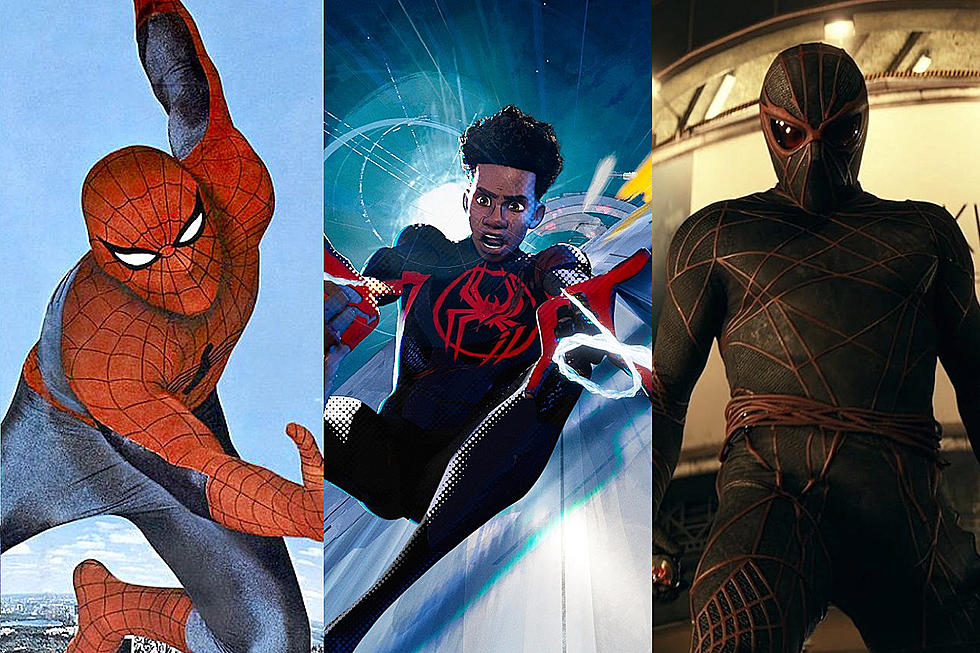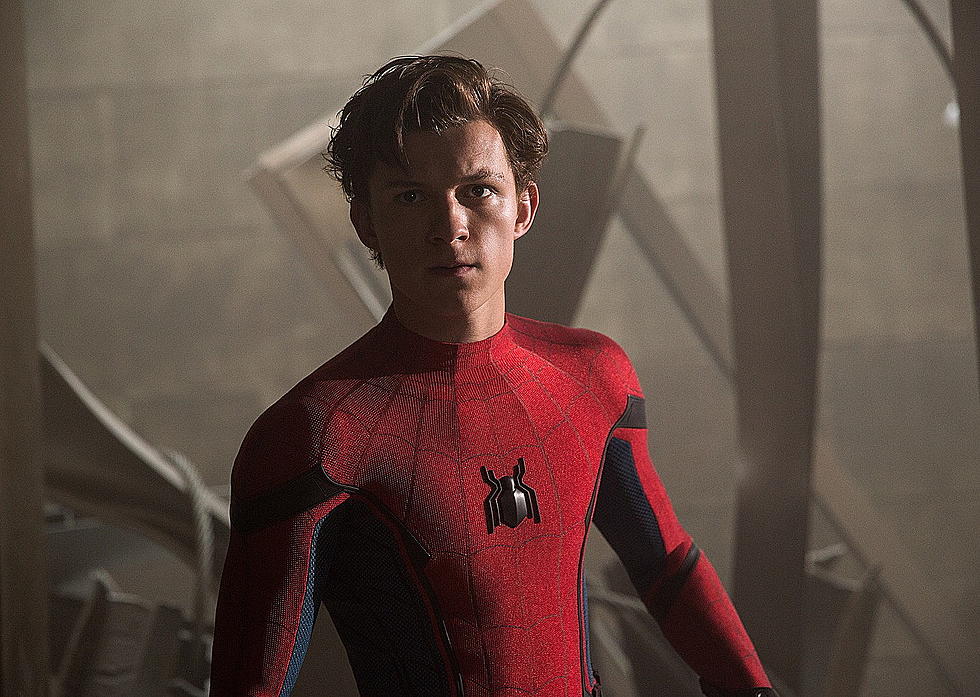
25 Years Ago: Todd McFarlane’s ‘Spider-Man’ #1 Changed the Industry
On this day in 1990, Todd McFarlane's Spider-Man #1 was released, and comic books would never be the same again.
Yes, that sounds like familiar hyperbole, but in this case it's also essentially true. To understand this one comic's impact, one needs to understand the climate of the industry at that time.
Chris Claremont was the king of Marvel, cruising merrily along on Uncanny X-Men, Excalibur, and other mutant titles. Tim Burton's first Batman movie had proven that there was a huge audience for superheroes, and the first cracks were beginning to appear in the widespread perception that comics were simply kids stuff. First and Comico were the premier small publishers, though Dark Horse was starting to make waves with their black-and-white licensed titles such as Aliens, Predator, and Aliens Vs. Predator. Amazing Heroes, Comics Scene, and Comic Shop News were the major sources for information on your favorite creators and series --- the first issue of Wizard was still a year away, and the World Wide Web was simply an idea that a couple scientists were toying with. Most comics cost $1.00, the vast majority of them were printed on newsprint, and drugstores and supermarkets and newsstands still carried them.
So it's not an exaggeration to say that when Spider-Man #1 hit, it changed the industry. But the changes it wrought aren't just the ones that people might think of from a casual glance.
For example, there was a narrative being presented at the time --- that still persists in some circles --- about what a crazy, risky idea it was that Marvel would let a big-name artist just go solo and write his own stories, and have him do so on a high-profile title. But there had been numerous precedents for that sort of move: John Byrne's stint on Fantastic Four, Walt Simonson's writer/artist run on Thor, even Jack Kirby's mid-'70s return to Captain America. Yet the fact that Todd was making his writing debut on a brand-new Spidey-series was marketed as somehow rebellious and edgy, and the audience ate it up.
In fact, that's sort of the entire key to Spider-Man #1: the marketing. Though it was initially promoted as just one of six new title launches that year (collectively referred to as the Heroes For The 90s), the adjectiveless Spider-Man stood apart.
Sure, Fabian Nicieza and Mark Bagley's New Warriors was a great title; Jim Valentino's Guardians Of The Galaxy reinvented Marvel's future in fascinating fashion; John Byrne's Sub-Mariner had its share of great ideas; Robocop was edgy and shot people and was therefore cool; and Ghost Rider had a flaming skull for a head. But those series were still presented in relatively straightforward, gimmick-free fashion. Spider-Man #1, on the other hand, had two different covers, plus polybagged variations for each. (Collect them all!) This was a sign of things to come.
And Spider-Man #1 also marks the moment when a whole new crop of investors (ahem, speculators) seriously made their presence felt in comics, having already wreaked havoc on the baseball card industry. Suddenly, people who weren't fans saw comics as a license to print money. Dealers began driving up prices, creating absurd demand based on assumptions of desirability, and convincing unsuspecting schmoes that didn't know Peter Parker from Planet Terry that they should purchase multiple copies of books at a substantial mark-up. Collectors and readers were no longer one and the same.
Spider-Man #1 sold over two million copies upon its release, yet only a few weeks later, people were paying $20 (or more) for copies, and putting them away for a rainy day.
This launch also led to a new level of comic-artist-as-rock-star insanity. Sure, there had been fan-favorite creators in comics for decades --- Jim Steranko, Neal Adams, Bill Sienkiewicz, Frank Miller, John Byrne, and so on --- but Todd's Spider-Man elevated the hype above and beyond what anyone had seen before. It created a whole new style of creator-focused marketing that would lead to Rob Liefeld and Jim Lee being given their own X-books. In demonstrating how much of a title's success could depend on the art alone, Spider-Man #1 paved the way for the high-flash/low-substance "extreme" era of comics that would follow.
I was twelve when Spider-Man #1 hit the stands. My close friends and I were all comic fans, and exactly the target audience. And we could not have been more excited.
We bought it. We bought both covers, in both bagged and unbagged editions. We sought out the black-and-gold third printing, we lusted after the platinum edition we saw up on the wall at the local comic shop with an absurdly out-of-reach price tag. We pored over every page; we wasted time in class trying to draw the bug-eyed freaky-looking Spider-Man and the strange knotted webs; we tried to reconcile McFarlane's take on Mary Jane with the classic Romita rendition; we smirked at the text page where Todd and editor Jim Salicrup introduced the title (and mocked each other mercilessly); we wondered about how the Lizard suddenly turned into a feral savage non-speaking creature; and we eagerly theorized about what would happen in the next issue.
The funny thing is, even at the time, we could tell that, as great as the comic looked, McFarlane was clearly taking his first whack at writing. We knew that the dialogue was stilted, and the pacing was shaky at best. We were very aware that the repetitive sound effect that ran through the entire book was kinda lame, and we laughed about it. We would suddenly turn to each other and solemnly intone "DOOM DOOM DOOM DOOM" and burst into hysterical giggles.
But none of that really even mattered. We didn't care if the story could've used some work, or if the script was overly repetitive, because this comic was awesome. It was new, it felt fresh and different, it felt like something that was truly ours, and we loved it. Even flipping through it today, there's a sense of energy and fun that practically bursts from the pages, all flaws notwithstanding.
Looking back now, it also set the stage for some great things. It didn't just lead to the gimmicks, the variants, the mass commercialization of the '90s and the sea of McFarlane-wannabe artists that would follow --- it made it clear how powerful creators were. And while it took a while to have that concept grow past the "Wizard Top 10 Hottest Artists" lists that immediately followed, bit-by-bit, it's led to a major shift in the industry.
I don't think it's a stretch to say that without Spider-Man #1, there would be no Image Comics, and the industry would have taken longer to shake off the Marvel/DC stranglehold.
A quarter-century later, we have an industry that's largely driven by creators. We have Saga, and Hellboy, and Sex Criminals, and Lumberjanes, and Phonogram, and Gotham Academy, and Li'l Depressed Boy, and Bitch Planet, and Ms. Marvel, and Sixth Gun, and Mind Mgmt. and so many other comics undeniably defined by their creators' visions and voices.
I'm not saying that Spider-Man made all that happen, but I think it was an important step in that journey. And that's worth a lot of heavy-handed phrasing and exaggerated anatomy.
(And DOOM DOOM DOOM DOOM still makes me giggle.)
More From ComicsAlliance









